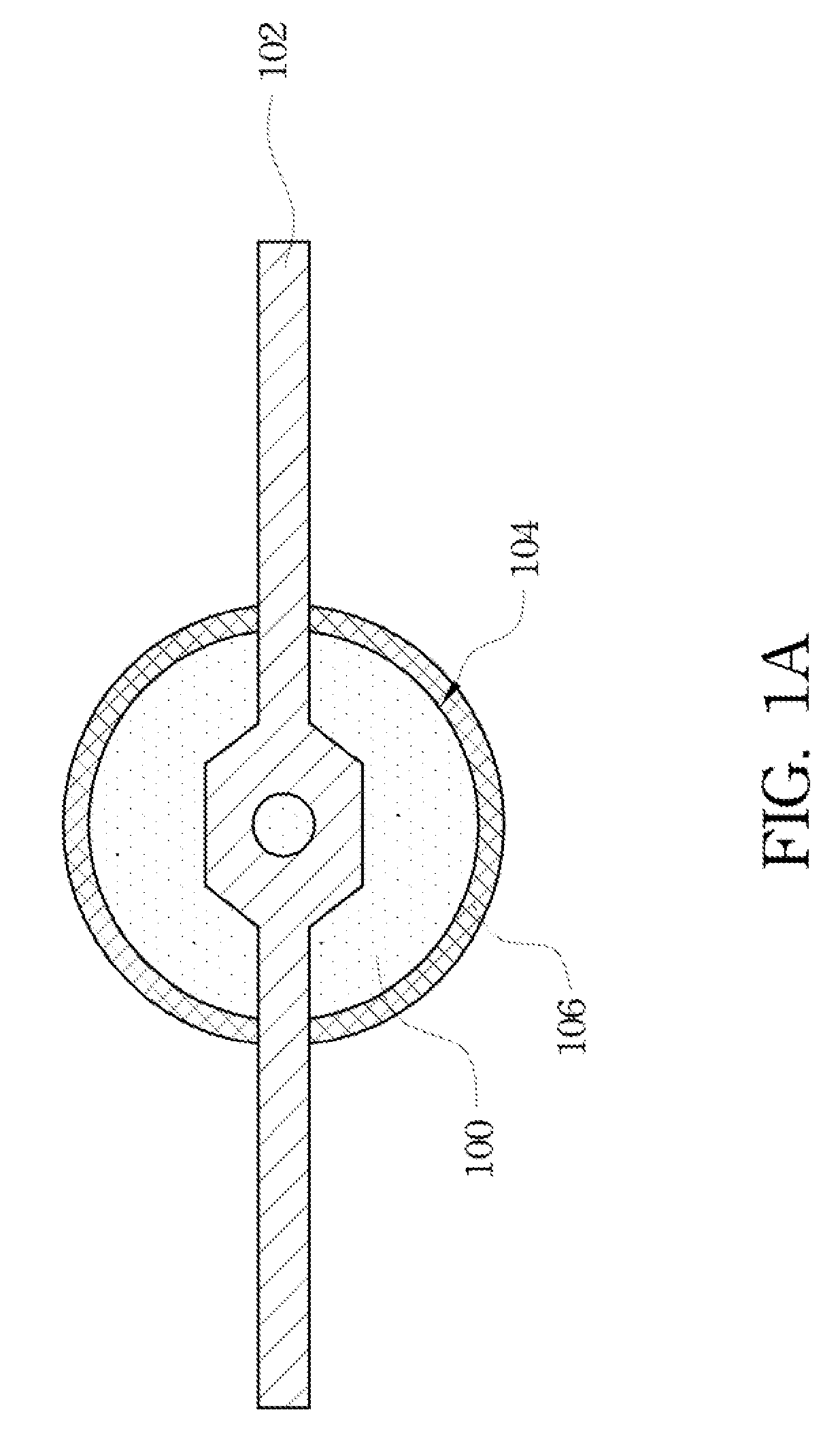Method for manufacturing roller mold
a technology of roller molds and molds, which is applied in the direction of photomechanical treatment originals, photomechanical instruments, photomechanical equipment, etc., can solve the problems of limited quantity of output per unit time, low throughput, and large size of pattern features which can be defined by photolithography techniques
- Summary
- Abstract
- Description
- Claims
- Application Information
AI Technical Summary
Benefits of technology
Problems solved by technology
Method used
Image
Examples
Embodiment Construction
[0017]The present invention discloses a method for manufacturing a roller mold. In order to make the illustration of the present invention more explicit, the following description is stated with reference to FIGS. 1A through 2F.
[0018]Refer to FIGS. 1A through 1F. FIGS. 1A through 1F are schematic flow diagrams showing a process for manufacturing a roller mold in accordance with a preferred embodiment of the present invention. In one exemplary embodiment, in the fabrication of a roller mold, a body 100 is firstly provided. The body 100 may be horizontally mounted on a carrier 102 selectively, wherein the body 100 is a cylinder. The material of the body 100 may be, for example, glass, quartz, or metal. A polishing treatment may be performed on a cambered surface 104 of the body 100 to make the body 100 have a smooth cambered surface 104. Then, a photoresist layer 106 is formed on the cambered surface 104 of the body 100 by a spray method with an airbrush for example. The photoresist l...
PUM
| Property | Measurement | Unit |
|---|---|---|
| Thickness | aaaaa | aaaaa |
| Flexibility | aaaaa | aaaaa |
Abstract
Description
Claims
Application Information
 Login to View More
Login to View More - R&D
- Intellectual Property
- Life Sciences
- Materials
- Tech Scout
- Unparalleled Data Quality
- Higher Quality Content
- 60% Fewer Hallucinations
Browse by: Latest US Patents, China's latest patents, Technical Efficacy Thesaurus, Application Domain, Technology Topic, Popular Technical Reports.
© 2025 PatSnap. All rights reserved.Legal|Privacy policy|Modern Slavery Act Transparency Statement|Sitemap|About US| Contact US: help@patsnap.com



